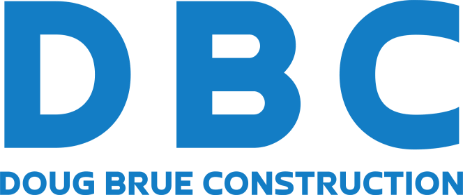If you’re well-prepared for it, stormy weather in the Twin Cities is an opportunity to hunker down and appreciate the comfort and convenience of your home. While the wind rages and rain, snow, ice, or sleet fall, you can relax in the warm, cozy environment that you’ve painstakingly created. However, if storm season arrives and your roof is ill-maintained, each boom of thunder and whistling gale could fill you with trepidation. Poorly maintained roofs don’t hold up well under the natural elements, especially when these elements are at their worst. Fortunately, the information that follows will help your roof successfully weather the next major storm event.
Common Forms of Storm Damage
Stormy weather can damage your roof in a number of ways. Strong wind forces can tear and lift off loose, aging, or damaged flashing, knock off shingles and shingle granules, and create cracks and gaps around roofing protrusions. Pelting rain and heavy snow loads can also cause these issues. If there are already areas of ingress for water, an onslaught of heavy precipitation could saturate your roof down to its substrate and enter the building.
If the perimeter of your home is just as poorly maintained as the roofing itself, your roof could sustain significant damage due to jarring impact events. When strong winds blow, dead, weak, or diseased tree branches could break off and land heavily on your house. Even relatively small sized limbs can seriously undermine the integrity of roofs, but larger branches and more forceful events can lead to a total roofing system collapse.
Limb Your Trees Before the Storm Season Arrives
Proactively protect your roof ahead of the storm season by having all of the trees on your property professionally limbed. Arborists look for and remove weak branches that are likely to break off and fall during stormy weather. These services can prevent severe, structural roof damage, but they’ll also give you fresh wood to season for a future cold-weather snap.
Replace Loose, Damaged, or Missing Shingles
The shingles most likely to fall off during stormy weather are those that are already hanging on for dear life. Look for shingles that are bent or curled at their edges as well as shingles that are lifting at their corners. Having these replaced before wind, rain, or snow arrives will help keep your roofing substrate, ceilings, paint, and drywall free of moisture damage.
It’s also a good idea to inspect your roof from the curb. Look for large, dark patches or other areas of discoloration. These may be an indication of roof mold. However, they’re more likely a sign of shingle granule loss. Shingle granules protect shingles from UV ray damage. They also play an important hand in routing water toward gutters and downspouts. Missing granules mean that your roof has lost its very first layer of protection and that it’s nearing the end of its life span.
If you don’t see any evidence of missing granules when inspecting your roof from the curb, check the base of your downspouts. You might find lost granules here that look like tiny, dark-colored pebbles. Even if you aren’t yet ready to schedule major roof repairs or a full-on roof replacement, you can still consult with a roofer to find the best and most needs-specific strategies for weathering the oncoming cold season.
Have Your Flashing Inspected
Have a licensed roofer inspect your roof’s flashing. This ultra-thin, galvanized steel is installed around skylights, chimneys, exhaust vents, and other roofing protrusions to keep water out. It’s also found at all roof valleys where two or more sections of a roof meet. If it’s bent, curled, torn, or outright missing, you should have your flashing repaired or replaced before the next storm. Roof protrusions and valleys are the most vulnerable areas of residential roofing systems. As such, they’re also the places where roofs are most likely to spring a leak.
The Benefits and Importance of Emergency Roof Tarping
The cold season in the Twin Cities lasts just over three months. However, it’s cold indeed. With an average daytime temperature of just 36 degrees Fahrenheit, it’s hardly ideal for roof replacements or major roof repairs. However, you can minimize property damage and your total repair costs by having weak or worn areas professionally tarped until you’re ready to schedule these projects.
The Role of Ongoing Maintenance in Keeping Your Roof Storm-Ready
To keep your roof storm-ready all of the time, stay up to date with ongoing maintenance. Annual roof inspection and maintenance services give roofers the chance to identify and replace missing or worn elements before roofs actually leak. They also allow roofers to determine whether roofing systems can successfully weather another storm season.
Residents of the Twin Cities can count on us for superior workmanship and top-quality roofing materials. Proudly serving the region since 1983, we offer roof installation, maintenance, and roof repair services. We also provide storm damage repairs, emergency roof tarping, and gutters. To schedule an appointment, contact Doug Brue Construction now.







